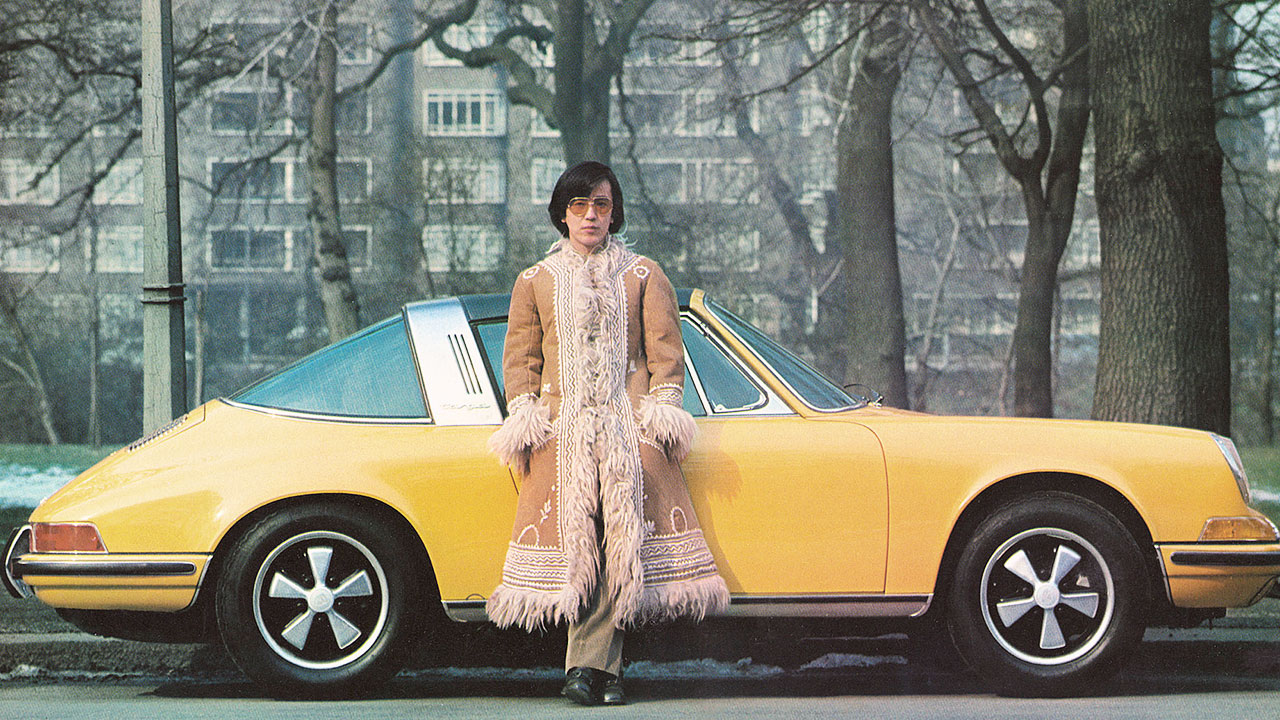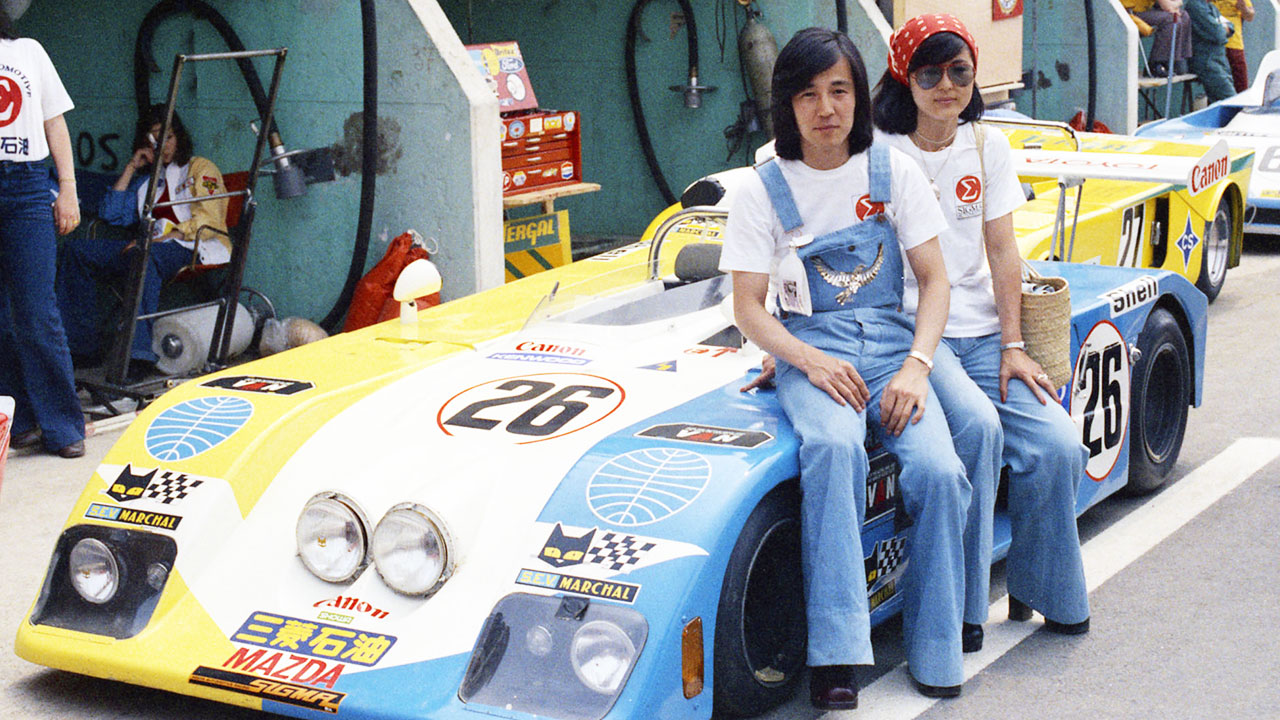Everything

“Drive Italian, wear Japanese, drink Russian, kiss French. Occasionally”. This phrase on Mai Ikuzawa’s Instagram feed, upon which I stumbled by accident, has me bewildered. And I decide to deepen my knowledge of this creative powerhouse. There’s lots of photos of vintage racing cars, extreme skiing adventures in Chamonix-Mont Blanc, random snippets about style (there’s several references to Vivienne Westwood’s early ’80s fashion, that of the Worlds End era). There’s shots of the London-based Ikuzawa in the company of her great friend and music producer/streetwear designer Hiroshi Fujiwara, and many photos of her father — Japanese motorsport hero Tetsu Ikuzawa — from the ’60s.
In one of the portraits that caught my attention, Mai Ikuzawa is sitting in the front seat of a 1950s Lancia B20, wearing a pair of vintage boots by Vivienne Westwood: a style from the designer’s early days, when partner Malcolm McLaren (former manager of the Sex Pistols) promoted his new band Bow Wow Wow, which was fronted by the sinuous Annabella Lwin. Perhaps now I know more, it’s fair to assume Westwood is a muse for Mai.
Something else that intrigued me was a photo of Ikuzawa wearing an old white Arai helmet, with a red symbol painted on the top representing the Japanese flag. I ask myself: who is this tiny stylish woman, with a refined sense of humour, whose ethos is to drive like an Italian, dress like the Japanese, drink heavier than a Russian, kiss like the French?
I’m hooked. I had to explore deeper. And what I discovered is interesting: Mai, born in Tokyo in the mid 1970s, is the daughter of Tetsu Ikuzawa, the first rider to come to Europe to race. Tetsu’s dream? To become the first Japanese man to make it to the world of Formula 1. Some history for context: in 1968 Tetsu Ikuzawa was in England to race in Formula 2 with the newly formed Frank Williams crew. He also tried to make his Formula 1 debut without success, and then went to compete in the 24 Hours of Le Mans in 1973.
Years later he decided to continue the racing dream, but as a manager for an all-Japanese Formula 1 team. But the ambitious project stalled when the Tokyo earthquake destroyed the team’s warehouse.
I decided to contact Mai to let me tell her story. After writing to her several times with no response, she finally offers a vague reply, saying that if I want, we can meet at a London restaurant in mid-July.
She presents three options, all on Kings Road: Ivy Chelsea Garden; Gallery Mess at the Saatchi Gallery; or Colbert. The idea that I have in mind is for her to tell her story: a Japanese girl brought to Europe by her father in the ’70s, placed in an exclusive English boarding school before enrolling in the prestigious Central Saint Martins College of Arts and Design. Later, she develops a passion for race cars. A double anomaly in a world that was once so closed, masculine and waspy. Not only was she female, Japanese, and racing enthusiast, but she was a driver, too.
In the 1940s, Mai’s Japanese grandfather separated from his wife: a rather unusual act back then. Mai’s father, Tetsu, did the same in the 1960s.
Her grandfather was an artist (a vocation well respected in Japan) and her father had a fundamentally rebellious spirit. And perhaps this explains why he chose the path of a professional racing driver – a little known sport in Japan at the time. But Tetsu Ikuzawa already had international ambitions and in 1965 — 10 years before Mai’s birth — he took himself to England to fight for the F2 Championship. He had a very eccentric style, unusual for a Japanese man of his era, dressed in very theatric clothing favouring fur coats and denim overalls.
Today the influence of Tetsu Ikuzawa’s signature style can be seen in the collections of some of the world’s biggest fashion houses … And his daughter Mai has followed in his footsteps: opening her own creative agency, consulting for Aston Martin.
Fortunately, Tetsu’s wealthy family background provided him with the financial resources to cope with the substantial expenses of racing in Europe. He became a popular character on the British circuit: buying a yellow Porsche, then white trucks for transporting his cars, on which he enscribed “Tetsu Ikuzawa Racing Partnership”.
Today, the influence of Tetsu Ikuzawa’s signature style can be spotted in the collections of some of the world’s biggest fashion houses. His vintage portraits inspired Bally’s Autumn/Winter 2017-2018 footwear collection. And it seems his daughter Mai has followed in his creative footsteps: opening the graphic design and communication agency, Bow Wow International in London, consulting for many brands including Aston Martin (Ikuzawa sits on their women’s advisory board).
And if you’re wondering what she drives: a beefed up Nissan GT-R when she’s in London, a Subaru Impreza STI on the streets of Chamonix. She also once owned a pink Toyota Celica, but has since sold it.
Her father Tetsu, after countless experiences in the world of European motorsport, has returned to Japan, where, in a shed in the midst of the factories on the outskirts of Tokyo, sits an amazing auto collection, comprising not just his ’72 Porsche, but also numerous cameras, more than 100 pairs of Nikes from the ’70s and ’80s — still in their original boxes — and even rarer vintage clothing. Last year, when an American journalist went to interview him in Tokyo they asked him to explain such an obsessive accumulation, he replied, laughing: “Terrible question: you are not a good interviewer”.
THIS ARTICLE APPEARED ORIGINALLY IN THE OCTOBER EDITION OF ICON MAGAZINE.
SUBSCRIBE HERE TO RECEIVE TWO PRINT EDITIONS PER YEAR FOR $15AUD

